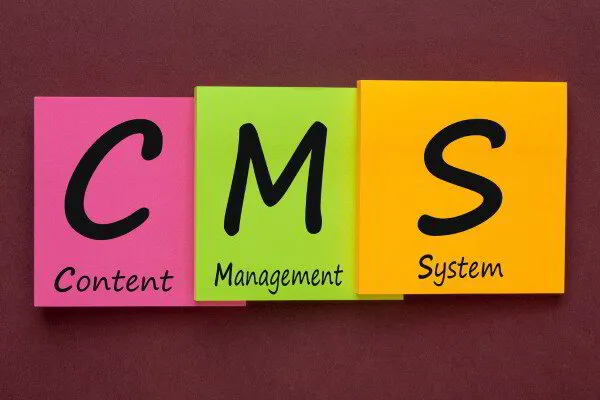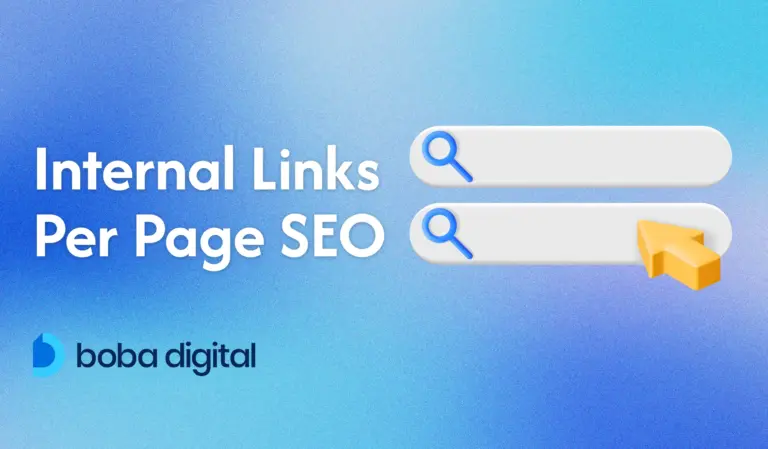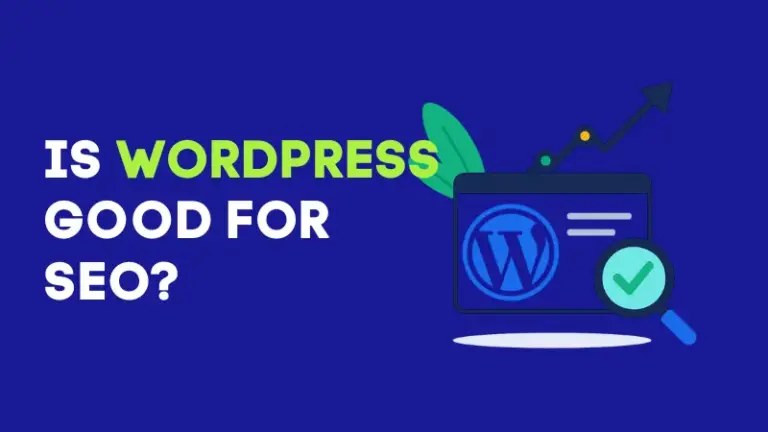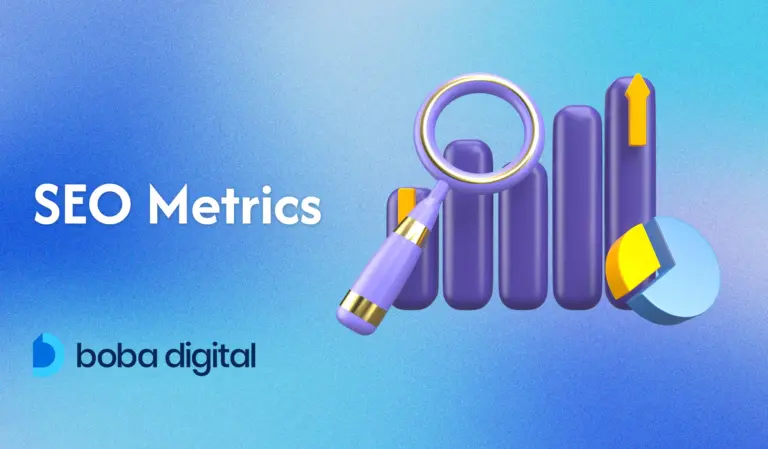Best CMS for SEO: Which Platform Should You Choose?
Choosing the right content management system in 2025 isn’t just a tech decision. It’s the launchpad for your SEO success. With the global CMS market expected to hit $54.16 billion by 2032, the competition for visibility is only heating up. And with over 90 percent of online journeys starting with a search engine, you can’t afford to get SEO wrong.
Gone are the days of keyword stuffing and crossing your fingers. Today, your platform needs to do more than just publish content. It has to speak the language of search engines, support your SEO tools, and make technical SEO feel easy.
But here’s the catch—not every CMS is built for that kind of heavy lifting.
So which CMS is best for SEO? Let’s get into it.
What Makes a CMS SEO-Friendly
If your CMS makes it easy for search engines to understand your site, you’re off to a good start.
A search-friendly CMS should give you control over how your site looks in results. That means being able to write your own page titles, set meta descriptions, and use readable URLs without jumping through hoops.
But that’s just the basics. A good system should also take care of things like sitemaps, mobile layout, and how pages are organized. These small pieces all play a part in how well your site shows up when people search.
For example, if you’re using WordPress, you can add tools like Yoast SEO that guide you while writing, helping you spot what’s missing and what can be improved.
The problem? Not every platform gives you the same flexibility. Some are built with search in mind, others make you work harder than necessary.
And since search brings in more visitors than social media, choosing a CMS that helps people actually find you isn’t just helpful — it’s smart.
Which CMS Is Best for SEO?
When it comes to SEO, WordPress is often the top choice — and for good reason. Its flexibility, wide range of plugins, and active community make it easy for both beginners and pros to improve their site’s visibility.
In fact, around 43.5% of all websites globally use WordPress, making it the most popular CMS by far.
Here’s why WordPress stands out:
- Easy integration with SEO tools like Yoast SEO and Rank Math
- Clean, customizable URLs for better indexing
- Full control over meta tags, alt text, and site structure
- Regular updates and strong security features
Thousands of themes and plugins that support mobile optimization, image compression, and schema markup
It’s user-friendly, reliable, and packed with features that support your SEO efforts right out of the gate.
Essential SEO Features to Look For
Metadata Management (Title Tags, Meta Descriptions)
You know that split-second decision you make when scrolling through search results? It usually comes down to a title and a short line of text. That’s metadata doing its job.
Your page title helps search engines understand what your content is about, and it’s the first thing people notice before they click. A good title can make your site look more relevant and trustworthy at a glance. Then comes the meta description, which doesn’t affect rankings but still plays a big role. It acts like your elevator pitch, giving users a reason to choose your link over the others.
A smart CMS gives you full control over both. You should be able to update titles and descriptions easily, not just one by one, but across your entire site if needed. Bulk editing and automation come in handy when you’re managing lots of pages, especially for e-commerce sites or large blogs.
In short, if your CMS doesn’t make metadata simple, it’s slowing you down.
Customizable URL Structures
Ever landed on a link that looked like a jumble of numbers, question marks, and slashes? Not exactly confidence-inspiring. Clean, readable URLs aren’t just easier on the eyes — they build trust and improve clarity for both users and search engines.
When your CMS lets you set keyword-rich slugs, you’re giving search engines another hint about what your page covers. A well-structured URL like /chicago-seo-services tells a clearer story than something like /page?id=123. It helps with ranking, makes sharing links more user-friendly, and gives visitors a better sense of where they’re headed.
But it’s not just about looks. Having control over your URLs also helps prevent duplicate content issues and keeps your site organized. When each page sits in the right place and follows a logical pattern, search engine crawlers can navigate it more efficiently. That means better indexing and fewer SEO headaches down the line.
A reliable CMS gives your content and SEO teams access to more than just slugs. It should let you manage header tags, structured data, and even schema markups like FAQs or how-to content. With Google’s AI-generated summaries becoming more common in search results, these details are starting to carry more weight than ever.
Mobile Optimization and Responsive Design
Try opening a site on your phone that’s built only for desktop. You pinch, zoom, scroll sideways, and probably bounce in seconds. That’s exactly what Google wants to avoid — and why mobile optimization isn’t optional anymore.
Since Google uses mobile-first indexing, it looks at your mobile site first when deciding how to rank your content. That means if your pages don’t work well on smaller screens, your visibility in search results takes a hit.
More than half of internet traffic now comes from mobile devices, so a CMS that doesn’t prioritize mobile design is already behind. The right platform should give you access to responsive themes, mobile-friendly previews, and tools that help you spot layout issues before they go live.
It’s not just about looking good — it’s about loading fast, scaling properly, and keeping visitors engaged no matter what device they’re using. Whether someone’s browsing from a phone, tablet, or laptop, your CMS should help you deliver a smooth, consistent experience every time.
Fast Loading Speeds and CDN Integration
Click. Wait. Leave. That’s the usual chain reaction when a site takes too long to load. And every second of delay gives your competitor a head start.
Speed isn’t just about user experience — it plays a direct role in your search engine rankings. Google has openly stated that slow-loading websites are less likely to appear high in search engine results. A sluggish page tells both users and search engines that your site may not be reliable or well-maintained.
A good CMS takes that seriously. It should support fast loading with streamlined code, efficient caching, and minimal bloat, even better if it allows you to connect with a Content Delivery Network. CDNs store copies of your content on servers worldwide, cutting down the time it takes for your site to load no matter where someone visits from.
For growing e-commerce sites or content-heavy platforms, this kind of setup is key. Combined with other SEO best practices like mobile optimization and structured data, site speed can make or break your search engine rankings.
If your CMS doesn’t have the tools to support fast performance, it’s slowing down more than your page — it’s slowing down your entire SEO strategy.
Image Optimization (Alt Text, Compression, Lazy Loading)
A stunning image might grab attention, but if it slows your site down or gets ignored by search engines, it’s doing more harm than good.
Visual content is a huge part of web pages today, especially for e commerce sites. But every image you upload can either help or hurt your SEO performance. That’s where image optimization steps in. Adding alt text does more than improve accessibility — it helps search engine crawlers understand what your visuals represent, giving your pages an extra chance to show up in search engine results.
Then there’s compression. Oversized images can drag down your load speed, which we already know affects search rankings and user experience. A CMS with built-in image compression tools or easy plugin support can fix that problem before it starts.
And let’s not forget lazy loading. This technique delays the loading of images until a user actually scrolls to them, improving performance without compromising the visual experience. It’s one of those technical SEO features that sounds complicated but makes a big difference in page speed and bounce rates.
If you’re using WordPress, you can streamline this entire process with the right plugin or even build a custom PHP plugin if you need something tailored. Either way, your CMS should make image optimization feel like a routine part of content creation, not a chore.
When these tools work together — alt text, compression, lazy loading — they quietly support your SEO strategies in the background, helping your site stay fast, accessible, and search engine friendly.
XML Sitemap and robots.txt Management
Imagine inviting search engines to explore your website, but forgetting to hand them a map. That’s what it’s like running a site without a proper XML sitemap or a well-structured robots.txt file.
An XML sitemap acts like a guidebook, helping search engine crawlers discover your most important pages faster. It’s especially useful for large websites or new pages that might otherwise get overlooked. A CMS that automatically generates and updates this file takes a lot of manual work off your plate — and keeps your content visible where it matters.
Then there’s the robots.txt file. While less flashy, it plays a critical role by telling search engines what they should and shouldn’t crawl. This prevents them from wasting time on unimportant pages like admin areas or duplicate content, keeping your crawl budget focused where it counts.
A search engine friendly CMS should give you easy access to both — no coding required. Non-technical users should be able to review, edit, or regenerate these files without digging into backend settings or hiring a developer.
When your CMS handles these behind-the-scenes tasks smoothly, it supports your larger SEO efforts in ways you won’t even notice — but search engines will.
Schema Markup and Structured Data Support
Search engines are smart, but they’re not mind readers. That’s where schema markup steps in — it adds extra context to your content so Google can do more than just index it. It can understand it.
If you’ve ever seen star ratings, event dates, product prices, or FAQ dropdowns directly in search engine results, that’s schema at work. These rich snippets don’t just look good — they help you stand out, drive clicks, and improve search rankings over time.
A capable CMS should either include built-in structured data tools or allow seamless integration with plugins that handle it for you. And it’s not just about product or review schema anymore. From how-to guides to articles to local business info, your CMS should support a wide range of schema types — and give you the option to customize markup when needed.
This kind of flexibility is especially important as search engine algorithms continue to favor content that’s well-structured and easy to interpret. Whether you’re a local business or an e commerce platform, structured data gives you a clear SEO advantage — and your CMS should make that advantage easy to unlock.
Internal Linking Tools
Imagine your website like a city. If the roads don’t connect, people (and search engine crawlers) get lost fast.
Internal links act as those roads, guiding traffic between pages and helping search engines understand how everything fits together. They’re also crucial for spreading page authority, improving crawlability, and keeping visitors engaged longer.
Now, not every CMS makes this process easy. The best content management systems offer smart tools that suggest or automate internal links as you create new content. This isn’t just helpful — it’s a time-saver for marketing teams trying to scale content without missing SEO essentials.
Whether you’re optimizing an e commerce business or publishing blog posts regularly, your CMS should support on page SEO by helping you connect the dots. Features like link suggestion popups or internal link tracking can boost both user experience and your search engine rankings.
Integration With Analytics and Tracking Tools
What’s the point of all your SEO efforts if you can’t see what’s working?
Being able to track user behavior, keyword performance, and search engine rankings is key to improving over time, and your CMS should make that easy. A strong platform doesn’t just publish content. It should work with tools like Google Analytics and Search Console to show you how your web pages are performing without making you hop between tabs all day.
Whether you’re tracking bounce rates, analyzing search queries, or keeping an eye on your top-performing URLs, these insights help shape smarter SEO strategies. And when your CMS integrates directly with these tools, it removes the guesswork. You get clearer reports, faster feedback, and fewer blind spots.
Some CMS solutions even offer built-in dashboards where marketing teams can check traffic sources, conversions, or crawl errors all in one place. This kind of transparency supports better decision-making, especially if you’re focused on search engine optimization across multiple channels or running a growing e-commerce platform.
Technical SEO Management (Canonical Tags, Redirects, Etc.)
Search engines love structure, and your CMS plays a huge role in making that happen behind the scenes.
If you’re serious about search engine optimization, your platform needs to support the technical side of things, not just the content. Features like automatic XML sitemap creation and internal link tracking are helpful, but the real deal is when you can manage deeper issues like duplicate content, broken links, and crawlability without writing a single line of code.
A solid CMS should let you easily set up 301 and 302 redirects so old URLs don’t drag down your search engine rankings. Just as important is the ability to apply canonical tags, which tell search engine crawlers which version of a page is the one that should rank — critical for keeping your SEO performance clean and focused.
Technical SEO features like customizable meta tags, structured data support, and site structure control should be part of the package, not an afterthought. Whether you’re dealing with e-commerce sites or managing content for a growing business, the best CMS for SEO gives you access to all these tools, without relying on developers every step of the way.
Think of it this way: when your CMS handles the technical details properly, your search rankings rise quietly but steadily in the background.
Top CMS Platforms for SEO in 2025
Finding the right CMS for SEO in 2025 isn’t just about ticking boxes. It’s about choosing a platform that helps your content rank, scale, and stay competitive — without holding you back. While there’s no one-size-fits-all solution, a few platforms have proven themselves when it comes to performance, flexibility, and real-world SEO results.
Here’s a closer look at the top contenders, what they do best, and where they might fall short.
1. WordPress
It’s hard to talk about SEO without WordPress entering the conversation — and that’s not by accident. This platform powers nearly half of all CMS-run websites, including a huge share of top-ranking domains.
What started as a humble blogging tool is now behind everything from personal portfolios to massive e commerce sites.
One of WordPress’s biggest strengths is how much control it gives you. You can fine-tune URL structures, edit meta tags, add canonical tags, and manage schema markup — all from a user-friendly dashboard. Technical SEO features like XML sitemap creation, customizable meta data, and image optimization are all within reach, even if you’re not a developer.
Its plugin ecosystem is another standout. Tools like Yoast SEO, Rank Math, and All in One SEO pack in features like keyword optimization, structured data, and content analysis. While many features are free, premium upgrades can range up to $130 per month depending on what you need.
The platform is also built with flexibility in mind. All new themes are mobile-responsive by default, and older themes can be updated with plugins to meet Google’s mobile-first standards. Whether you’re running a blog, building a scalable online store, or managing thousands of web pages through programmatic SEO, WordPress keeps up without needing advanced coding knowledge.
Routine tasks like adding alt text, compressing images, or inserting meta descriptions can even be automated. That frees up your time to focus on strategy, not busywork — a major win for SEO experts juggling multiple projects.
WordPress pros
- Wide selection of responsive themes
- Extensive plugin support
- Full control over SEO essentials
- Scalable for sites of any size
WordPress cons
- Needs plugins to unlock full SEO potential
2. Webflow
If WordPress feels like building with LEGO blocks, Webflow is more like sketching your site by hand — but with the control and precision of a developer behind every stroke.
What makes Webflow stand out is its focus on clean, export-ready code and built-in SEO features that don’t rely on third-party plugins. From customizable meta tags and schema markup to lightning-fast hosting and mobile optimization, it’s built with search engine performance baked in from day one.
One major perk? Webflow helps avoid the costly technical fixes many sites face after launch. By keeping your code tidy and SEO friendly from the start, you could save anywhere from $1,000 to $4,000 in cleanup later on — especially useful for teams that don’t want to wrestle with bloated themes or conflicting plugins.
The platform’s visual CMS makes content optimization more intuitive. You don’t need to dig through menus or write code to adjust on-page SEO elements like meta descriptions, alt text, or canonical tags. It also supports structured data, which helps your site earn rich results and stay competitive in modern search engine algorithms.
While Webflow’s hosting plans are pricier than WordPress’s, it delivers stability, speed, and simplicity in return. And because you’re not stacking plugin after plugin, there’s less risk of performance issues or unexpected conflicts.
Webflow pros
- Intuitive visual editor with built-in SEO tools
- Fast, secure hosting and mobile optimization
- Supports schema and customizable metadata
- No reliance on external plugins for SEO essentials
Webflow cons
- Higher monthly cost compared to other CMS platforms
- Not as beginner-friendly for those used to traditional site builders
3. Wix
If you’re launching your first website and want to keep things simple, Wix might feel like a breath of fresh air. What once was seen as just a basic site builder has steadily evolved into a surprisingly capable CMS for search engine optimization, especially for small businesses and solo creators.
Wix comes with built-in SEO tools that help users edit meta tags, generate sitemaps, and optimize for mobile without needing technical skills. You can create SEO friendly URLs, add alt text to images, and even preview how your site will appear in search engine results. It’s all built into an interface that’s designed to feel more like drag-and-drop than trial-and-error.
For beginners, the experience is straightforward. SEO essentials like metadata management, mobile optimization, and keyword optimization can be handled with minimal effort. And while the platform doesn’t offer deep control over technical SEO features like structured data or XML sitemap customization, it’s constantly improving.
Wix also helps businesses get up and running fast. For those looking to invest in SEO services, costs typically range from $50 to $5,000 per month depending on the size and scope of the campaign — a flexible entry point for many small brands testing the waters.
Still, advanced users may find the platform limiting. Unlike WordPress or Webflow, there’s less freedom when it comes to fine-tuning site structure or adding advanced SEO features. But for small to mid-sized sites that value speed and ease of use over full customization, Wix holds its own.
Wix pros
- Beginner-friendly tools for meta tags, image optimization, and mobile
- Built-in mobile responsiveness
- Quick setup with no coding required
Wix cons
- Limited control over structured data and sitemaps
- Less flexibility in customizing URLs and other technical elements
4. Squarespace
If aesthetics are high on your list, Squarespace has probably already caught your eye. Known for its sleek templates and all-in-one setup, it offers a smooth entry point for creatives, small business owners, and anyone who wants their site to look great with minimal effort.
But behind the polished layouts, Squarespace does more than just design. It comes with built-in SEO features like customizable meta tags, mobile optimization, and automatic SSL — making it easier for your site to be search engine friendly from the start. The platform handles basics like page speed, image optimization, and responsive design without needing plugins or outside help.
That said, when it comes to technical SEO, Squarespace still has some catching up to do. You’ll run into limits with customizable URLs, structured data, and advanced SEO capabilities. For more complex sites or anyone running a large content strategy or programmatic SEO setup, these restrictions can feel like roadblocks.
Squarespace follows a mid-range pricing model, bundling hosting, templates, and core features into one monthly fee. It’s not the cheapest, but it’s predictable — no surprise plugin costs or maintenance bills.
Squarespace pros
- Visually stunning templates with built-in mobile optimization
- Easy metadata editing for non-technical users
- Bundled hosting and support keep things simple
Squarespace cons
- Limited control over technical SEO features
- Restricted URL structure customization
5. Shopify
Running an online store in 2025? There’s a good chance you’ve either considered or already landed on Shopify. It’s built from the ground up for e-commerce businesses, and when it comes to launching fast with SEO friendly content and design, Shopify makes the process surprisingly easy.
Right out of the box, Shopify includes all the essential SEO features most store owners need — mobile optimization, clean site structure, built in sitemaps, and SSL security.
Its platform is also designed to be fast, which helps with both search engine rankings and bounce rates. Add in app integrations for metadata editing, structured data, and image optimization, and it covers most of the SEO essentials.
But if you’re scaling a large store or working on advanced SEO strategies, the cracks begin to show. You can edit your URL slugs, but not the path prefixes like /products/ or /collections/, which limits your control over URL structure — something technical SEO experts often flag as a drawback.
Customizable meta tags and other SEO features are available, but many require third-party apps, some of which can add to your monthly costs or slow down your site if not carefully managed.
Shopify starts at $29/month, but most serious stores end up investing in paid apps to unlock the full SEO capabilities. Still, for businesses focused on growth, sales, and a mobile-friendly experience, it remains one of the best CMS platforms for e-commerce.
Shopify pros
- Designed specifically for online stores
- Mobile optimization and web security are built in
- Clean URLs, built-in SEO tools, and fast performance
- Hundreds of SEO plugins and integrations are available
Shopify cons
- Limited control over URL structure and other technical SEO features
- Relying on too many apps can impact site speed and SEO performance
6. Drupal
If you’re working with a massive site that needs total control over structure, functionality, and SEO, Drupal isn’t just an option — it’s a powerhouse. But unlike user-friendly platforms that hold your hand, Drupal expects you to know what you’re doing or have a developer on standby.
Where Drupal truly shines is in its flexibility. You get advanced SEO features like granular control over structured data, customizable meta tags, clean and customizable URLs, and precise site structure management.
For businesses focused on technical SEO, it offers the kind of access that most other CMS platforms just can’t match.
It’s also built to scale. Whether you’re managing thousands of pages across multiple user roles or integrating with complex databases, Drupal handles it without blinking. It’s a go-to choice for government websites, universities, and large enterprises that need stability, security, and full customization.
But with that power comes a learning curve. The interface isn’t as intuitive as WordPress or Wix, and setting things up usually involves modules — the Drupal version of plugins — along with some developer time. That means higher upfront costs and longer setup times, especially for teams without in-house tech expertise.
Drupal pros
- Ideal for large, complex, enterprise-level websites
- Full control over technical SEO, schema, and site structure
- Supports responsive design and scalable content
- A large library of SEO modules for customization
Drupal cons
- Not beginner-friendly
- May require a developer for setup and maintenance
- Needs additional modules for full SEO functionality
7. Joomla
Not every CMS makes it easy to stay organized as your site grows, but Joomla gets that part right. Known for its strong content structure and flexible layout system, Joomla gives you the ability to manage a growing site without sacrificing speed or control.
From an SEO perspective, it covers a lot of the essentials. You can manage meta tags, create seo friendly URLs, customize metadata, and implement redirects without relying on too many third-party tools.
Joomla also supports responsive templates, and uniquely, it allows you to apply different templates to different sections of your site — a useful feature for larger or more dynamic websites.
That said, you’ll likely need extensions to unlock advanced seo capabilities like structured data, schema integration, or automated content optimization. While Joomla doesn’t have the massive plugin ecosystem that WordPress does, it offers a focused range of SEO extensions to handle everything from canonical tags to sitemap generation.
The platform itself is open source and free to use, but costs can come in through hosting, premium extensions, or hiring a developer if you want to fine-tune technical SEO features.
Joomla pros
- Fast and responsive with built-in mobile optimization
- Easy-to-use content management for non-technical users
- Supports customizable metadata, URLs, and alt text
- Multiple templates available and flexible page design
Joomla cons
- Some default settings aren’t SEO friendly
- Advanced SEO tools require additional extensions
How to Choose the Best CMS for Your SEO Needs?
With so many CMS platforms offering “SEO features,” it’s easy to get overwhelmed. But the best CMS for your site isn’t just the one with the most tools — it’s the one that aligns with your goals, skill level, and how much control you actually need.
Here’s how to narrow it down:
Assess Your Technical Expertise and Resources
No CMS is truly “one-size-fits-all” — especially when it comes to how much technical work you’re ready to handle.
If you’re not someone who enjoys adjusting metadata settings, setting up canonical tags, or debugging site structure issues, platforms like Wix or WordPress (with the right plugins) are built with you in mind. They offer user-friendly CMS experiences with built-in SEO tools that cover most essentials — from mobile optimization to alt text.
On the flip side, Drupal and Webflow are packed with advanced SEO features and allow deeper control over things like structured data and technical SEO, but they often require a steeper learning curve. Without prior experience or a developer on your team, managing redirects, optimizing schema markup, or customizing meta tags might become overwhelming.
Whether you’re running a blog, an online store, or a programmatic SEO project, understanding your limits early will save you time, money, and frustration later on.
Consider Your Website Type (Blog, E-Commerce, Enterprise, Etc.)
Choosing a CMS without thinking about your site’s purpose is like picking a vehicle without knowing the terrain — you might end up with a sports car in a snowstorm.
Your content management system should match the kind of site you’re building and how much flexibility you need for SEO.
If you’re launching an e-commerce business, Shopify makes it easy to manage product pages, optimize SEO friendly URLs, and handle mobile optimization out of the box. It’s built for online selling, with fast hosting and essential SEO tools included — though technical SEO tweaks are more limited.
Running a blog or content-heavy site? WordPress remains the top choice. It offers full control over metadata, structured data, and SEO friendly content, all while supporting thousands of plugins for everything from keyword optimization to internal linking.
Need something more robust for a corporate or enterprise site? Drupal handles large volumes of content, advanced user permissions, and custom site structure with ease. It’s perfect for SEO experts who want granular control over schema, canonical tags, and technical SEO features, though it comes with a steeper learning curve.
If your project is design-focused, Webflow or Squarespace might be a better fit. They combine visual flexibility with built-in SEO tools and responsive templates, making them ideal for portfolios or service-based businesses that don’t need heavy customization.
Scalability and Future Growth
Building a site is one thing and growing it is another. And the last thing you want is to hit a wall just when things start taking off.
Whether you’re planning to expand your blog into a content hub or turn your small store into a full-scale e-commerce platform, your CMS needs to grow with you. That includes handling more web pages, increased traffic, complex SEO strategies, and deeper customization.
WordPress handles scale exceptionally well. From programmatic SEO builds with thousands of dynamic pages to enterprise-level content management, its flexibility and plugin ecosystem make it a go-to for long-term growth. Plus, with the right hosting and technical setup, performance can keep up as your site expands.
Drupal is another top performer when it comes to scalability. It’s built for large, complex websites that require layered permissions, multilingual support, and advanced technical SEO features. While it demands more technical expertise, it won’t flinch at high traffic or intricate site architecture.
On the other hand, platforms like Wix and Squarespace are better suited to smaller sites with simpler structures. They’re fast to launch and easy to maintain, but as your content grows and your SEO strategies become more advanced, you may find their limited SEO capabilities and customization options slowing you down.
Budget and Ongoing Costs
It’s easy to focus on features and skip the price tag until the monthly bills start adding up. A CMS isn’t just a one-time decision; it’s a long-term investment. And the real cost often lies in what happens after launch.
WordPress is technically free, but building a strong SEO foundation usually involves premium plugins, custom themes, and reliable hosting. Expect to spend anywhere from $50 to $130+ per year on SEO tools like Rank Math Pro or Yoast Premium, with hosting plans starting as low as a few dollars and scaling into the hundreds, depending on performance needs.
Webflow flips the model — it comes with a higher monthly hosting fee, but that price often saves you thousands in SEO fixes down the line. With built-in SEO tools and clean code, Webflow can eliminate the need for multiple plugins or third-party developers just to fix speed or schema issues.
Wix offers an affordable start, but SEO costs can vary widely. You’ll find services ranging from $50 to $5,000 per month, depending on how much help you need and how competitive your niche is. While the platform is user friendly, unlocking advanced SEO features might mean paying for expert support.
Shopify starts at $29/month, but most store owners end up spending more on paid apps to get advanced SEO capabilities, metadata management, and content optimization features. As your e commerce site grows, so do those monthly expenses.
And don’t forget the extras: themes, customizable metadata tools, CDN integration, developer fees, and plugin subscriptions all count toward your total SEO investment.
Community Support and Plugin Ecosystem
When you hit a wall with your CMS — whether it’s a broken plugin, a sudden drop in search rankings, or a schema error you can’t figure out — having a strong community behind you can make all the difference.
A well-supported CMS isn’t just easier to troubleshoot; it evolves faster, adapts to new SEO best practices, and gives you access to tools that keep your site competitive. WordPress leads the pack here, with a massive ecosystem of plugins like Yoast SEO, Rank Math, and All in One SEO, plus forums, tutorials, and expert support at every level.
If there’s an SEO problem, chances are someone’s already solved it — and written a guide about it.
Webflow and Squarespace are catching up, with growing communities and a steady stream of helpful tutorials and documentation. Webflow, in particular, is expanding its integrations and offering more advanced tools for SEO friendly content and structured data. But they still have fewer third-party SEO plugins compared to WordPress.
Platforms like Drupal and Joomla offer strong technical flexibility, but their plugin ecosystems are smaller and often skew toward more experienced users. You’ll find modules that support canonical tags, metadata editing, and technical SEO — just expect a steeper learning curve and fewer beginner-friendly tutorials.
Conclusion
No CMS wears the crown for everyone — the best platform for SEO depends on what you’re building, how tech-savvy you are, and where you want your site to go. Whether you’re launching a lean blog or scaling a complex e-commerce empire, your CMS should help you rank, not hold you back.
Focus on the SEO essentials: clean code, metadata control, fast loading speeds, and mobile responsiveness. But don’t ignore the long game — look for platforms that can grow with your goals and won’t leave you stranded when something breaks.
Still unsure which CMS will actually move the SEO needle for your business? Don’t sweat it — that’s what we’re here for.
At Boba Digital, we don’t just optimize websites. We match you with the right platform, build smart SEO strategies, and help you outrank the competition (without the guesswork).
Let’s talk: Contact Boba Digital and start turning clicks into customers.
FAQs
Can I achieve good SEO with a website builder like Wix or Shopify?
Absolutely. Website builders like Wix and Shopify have significantly improved their SEO features in recent years. With built-in tools for meta tags, custom URLs, structured data, sitemaps, and mobile optimization, both platforms now support core SEO best practices. While they may not offer the advanced technical flexibility of platforms like WordPress or Drupal, they provide enough SEO capabilities for small to medium businesses to rank competitively, especially if you’re using keyword research, internal linking, and image optimization effectively.
Does the choice of CMS directly affect my Google rankings?
Yes, your CMS can influence how easily search engines crawl, index, and rank your content. SEO-friendly platforms offer features like schema markup, fast loading times, customizable URLs, responsive design, and XML sitemaps—all of which impact rankings. A platform like WordPress gives full control over technical SEO elements, while others like Squarespace or Webflow offer solid out-of-the-box optimization. Ultimately, the CMS affects how well you implement SEO strategies like title tags, keyword placement, and mobile responsiveness, which all contribute to better visibility on Google.
Does changing CMS affect SEO?
Switching CMS platforms can have a major impact on your SEO if not done correctly. Migrating content, maintaining your URL structure, setting proper 301 redirects, and preserving internal links are all critical steps to avoid losing rankings. A CMS migration is also a chance to improve technical SEO, update outdated meta descriptions, and enhance mobile performance. However, missteps like broken links, slow page speeds, or missing canonical tags can hurt your visibility. It’s important to conduct an SEO audit before and after the transition to safeguard organic traffic.















